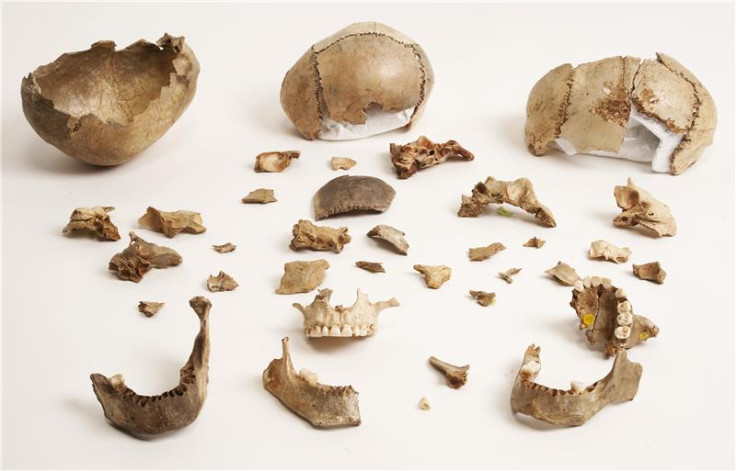Cannibal cavemen in England gnawed on bones and sucked out marrow

Cannibal cavemen lived in England almost 15,000 years ago, eating human flesh, gnawing on bones and splitting them to feast on the marrow inside, researchers have said.
Analysis of fossils from the archaeological site of Gough's Cave in Somerset has provided new evidence of cannibalism with a sophisticated culture of butchering and carving up human remains.
Scientists from the Natural History Museum in London, University College London and a number of Spanish researchers were examining bones first discovered over 20 years ago. They had been found among the butchered remains of large mammals, flint, bone, antler and ivory artefacts.
Previously, scientists had found that the humans living at Gough's Cave would use human skulls to create cups. Scientists have now found evidence of human teeth marks on many of the bones, providing solid evidence of cannibalism.
Using new radiocarbon techniques, researchers found the remains were deposited over a short period, potentially during a series of seasonal occupations, about 14,700 years ago.
Lead researcher Silvia Bello said: "The human remains have been the subject of several studies. In a previous analysis, we could determine that the cranial remains had been carefully modified to make skull-cups. During this research, however, we've identified a far greater degree of human modification than recorded earlier.

"We've found undoubted evidence for defleshing, disarticulation, human chewing, crushing of spongy bone, and the cracking of bones to extract marrow."
Researchers believe the cannibalism was part of a mortuary practice that involved the intensive processing and consumption of bodies, along with the ritual use of the skull-caps.
Writing in the Journal of Human Evolution, the authors said "Our present analysis of the postcrania has identified a far greater degree of human modification than recorded in earlier studies ... The presence of human tooth marks on many of the postcranial bones provides incontrovertible evidence for cannibalism.
Simon Parfitt, from UCL, said: "A recurring theme of this period is the remarkable rarity of burials and how commonly we find human remains mixed with occupation waste at many sites. Further analysis along the lines used to study Gough's Cave will help to establish whether the type of ritualistic cannibalism practised there is a regional (Creswellian) phenomenon, or a more widespread practice found throughout the Magdalenian world."
© Copyright IBTimes 2025. All rights reserved.






















